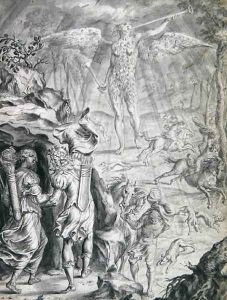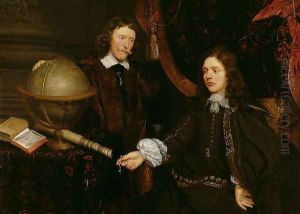Francis Cleyn Paintings
Francis Cleyn (also spelled Franz or François) was a German-born painter and tapestry designer who is most well-known for his work in England during the 17th century. Born around 1582 in Rostock, situated in the duchy of Mecklenburg-Schwerin, Cleyn showed artistic promise at an early age. He likely received his initial training in his homeland but moved to Italy to further his studies. In Italy, he spent a significant amount of time in Venice, where he was influenced by the great masters of the Italian Renaissance, and his style shows a strong Italianate influence, rich in allegorical content and classical themes.
Cleyn was recruited to England by the English courtier and diplomat Sir Henry Wotton during the reign of King James I and moved there in 1625. He became the chief designer for the Mortlake Tapestry Works, a prestigious tapestry-weaving enterprise established in Mortlake, South West London by James I in an effort to produce tapestries that could compete with those from other European workshops. Cleyn's designs were highly sought after, and he played a crucial role in the development of the English tapestry industry, which allowed England to compete with the famed tapestry producers of Flanders and France.
In England, Cleyn worked on a number of important projects, including designing illustrations for the 1632 edition of Virgil's 'Aeneid' and paintings for the houses of the nobility. His works were characterized by their ornate detail, vivid imagination, and the fusion of Northern European and Italian Renaissance styles. He was also involved in decorating several royal palaces, and his designs for the royal tapestries were well-regarded by King Charles I and his court.
Despite his success as a designer, Cleyn's name is not as widely recognized today as some of his contemporaries. This is partly because tapestry design, as a collaborative medium involving many hands, does not always lend itself to the fame accorded to painters and sculptors whose individual works can be more easily identified and celebrated. Nonetheless, his contribution to the arts in England during the 17th century was significant. He continued to work in England until his death in London in 1658.

